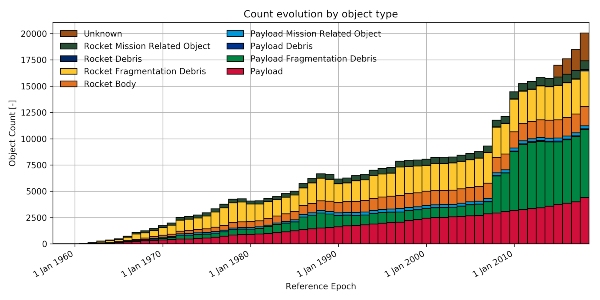It is intended to solidify their commitment to long-term sustainability of human activities in Earth orbit.
To improve space safety and and sustainability, the charter aims for signatories to stop generating space debris by 2030.
As well as the UK, Austria, Belgium, Cyprus, Estonia, Germany, Lithuania, Poland, Portugal, Romania, Slovakia and Sweden pledged their support at the end of last month.
The European Space Agency also signed up to the Zero Debris Charter itself, as an International Governmental Organisation (IGO).
Zero Debris
“The Zero Debris Charter signals Europe’s unwavering commitment to be a global leader on space debris mitigation and remediation, fostering collective action of a large community of space actors from all around the world,” said Quentin Verspieren, Protect Accelerator and Space Safety Programme Coordinator at ESA.
“The impact of the promise made today by these twelve countries on the sustainability of our future activities in space will be immense.”
The ESA says more than 100 organisations have already promised to sign the community-led endeavour in the coming months.
Also, industry and academic partners as well as NGOs are expected to officially sign the Zero Debris Charter at the ILA Berlin air show on 6 June.
A breakdown of space debris, by object type, is shown above.
You can read more about the Zero Debris Charter and what it hopes to achieve on the ESA website, and also the charter itself. It was first published on 7 November 2023 at the ESA Space Summit taking place in Seville.
One of its targets is that the probability of space debris generation – through collision and breakups – should remain below 1 in 1000 per object during an entire orbital lifetime.
Space debris
What is space debris? According to the European space agency, more than 60 years of space activities involving more than 6050 launches have resulted in 28,160 remaining tracked object in space.
These are tracked by the US Space Surveillance Network and maintained in their catalogue, it says, covering objects larger than about 5-10 cm in low-Earth orbit (LEO) and 30 cm to 1 m at geostationary (GEO) altitudes.
This large amount of space hardware has a total mass of more than 9300 tonnes. The ESA estimates, however, that 4,000 are intact, operational satellites today.
You can read the latest figures related to space debris, provided by the agency’s Space Debris Office at ESOC, in Darmstadt, Germany.
As the debris population grows, the more collisions are likely to occur.
See also: ESA, NASA ramp up co-operation to land Europe’s ExoMars rover on Mars

